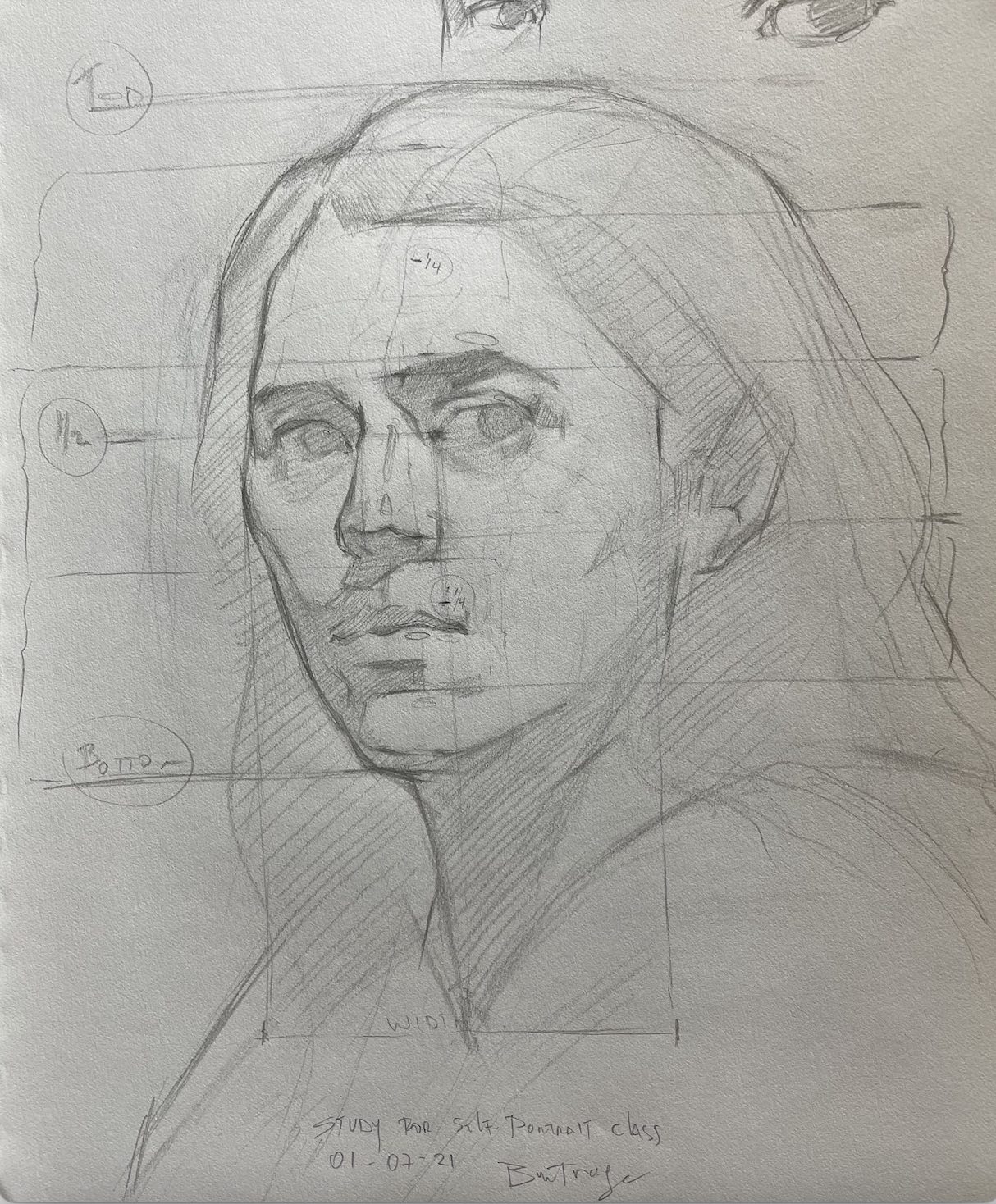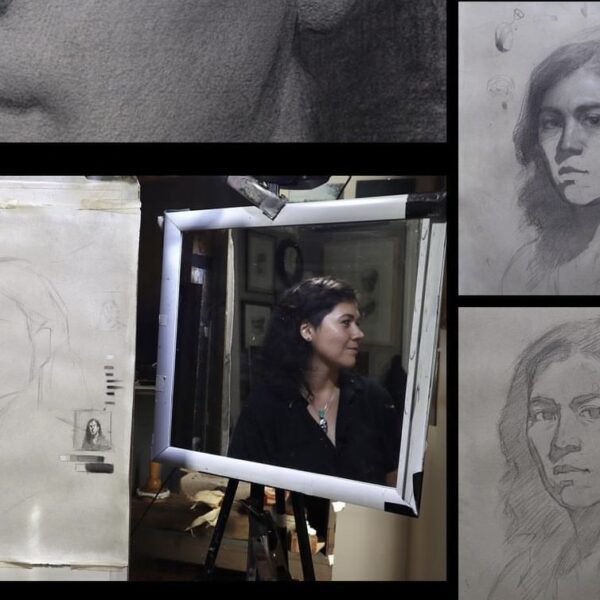Self-Portrait Drawing: Graphite, Charcoal, White Chalk on Toned Paper (Online Course)

Diana Buitrago
Thursdays, 10 AM – 12 PM ET – please adjust for your timezones
September 26, October 3, 10, 17, 24, 31, November 7, 14, 2024
Plus over 10 hours of recorded demos. Access provided at least a week before each live class session. There is a homework assignment due the first class.
8 weeks– Tuition $495
Limit: 10 students
Take this class:
- to learn how to render form by form from life
- to put into practice the fundamentals of GCA training by drawing a human from life.
- to investigate the most personal subject matter.
Is this class for me/ prerequisite?
- Prior experience drawing in the academic method is highly recommended.
- Prior experience blocking in a portrait is helpful.
Online tech needs:
- The class will be conducted on the Zoom platform and is a live online experience.
- Diana’s classes are recorded and made available so students can review demos and critiques after each live session for the entirety of the class.
- This class also uses Google Classroom to distribute materials. Watch this video for more insight.
Both of these services are free but require registration. - It will be necessary for students to have access to a computer, tablet or smartphone. The recommended device is a laptop or desktop.
“Excellent class, well organized, sequential approach to rendering portraits with useful and supportive critiques. Very helpful to have demo videos to watch. Self portrait offered me the opportunity to work over a period of time with a model who was always there.”- Ellen
Course Description
Over the course of 8 weeks, artists will complete a self-portrait drawing using the mirror to work from life. Instructor Diana Buitrago will demonstrate the processes of blocking-in the portrait, comparative measurements, anatomy and structure and value/form organization. Diana will work on toned paper, fully rendering all the forms with graphite and using charcoal and white chalk in some areas such as accents, shadows and highlights. The class will examine examples of old master self-portrait drawings. Artists will submit images each week of their work for critiques. See the full outline below.
Artists will be given access to each week’s demo video at least a week before each corresponding live class session. The pre-recorded demo will provide techniques and instruction for each week’s assignment. Students will email in the assignment before the corresponding live class. During the class the instructor will provide individual critiques and lead a group discussion. Artists may also ask questions about the next week’s assignment.
Session 1: Set up, Materials, Thumbnails
- Introduction to the dynamic of the class.
- Quick presentation examining examples of self-portrait drawings.
- Set up using a mirror, controlling lighting, review of materials.
- Explanation on how to work with toned paper or white paper.
- Small thumbnail compositions.
Session 2: Block-in Part I
- Putting down first impressions of the pose, trusting sight first, using straight lines, angles and point to point measurement.
- Comparative measurements of 1/2, 1/4, and height to width.
- Conceptual references like anatomical landmark points in the skull and optical aids like checking shapes with a mirror to correct mistakes, will be discussed along the way.
Session 3: Block-in Part II
- Working on more specific shapes and point to point measurements.
- Moving from general to specific to focus on one area at a time to finish a solid block-in.
- Explanation of the importance of letting the shadows be “quiet and flat” and how to do it correctly.
Session 4: Form and Rendering
We will tackle one section of the portrait at a time during each class.
- The concept of light and form.
- Where to begin rendering the first form.
- Explanation of rendering types, hatching, high resolution vs abbreviated rendering.
- Examples of rendering using the class materials.
Session 5 to 8: Topography of the Features of the Portrait
- Continuing to render the portraits’ features with emphasis on maintaining correct anatomy.
- How to critique the whole drawing in order to reinforce areas, expand value range, make corrections, etc.

